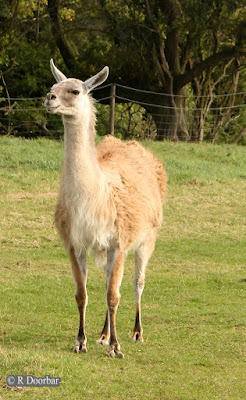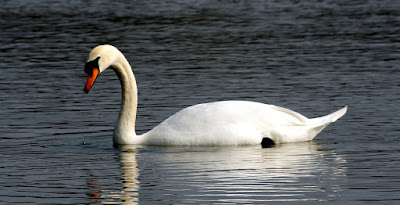created in photoshop
Wednesday, 28 December 2011
Thursday, 1 December 2011
Friday, 18 November 2011
Friday, 11 November 2011
Wednesday, 9 November 2011
Sunday, 6 November 2011
November 5 (photo 2)
Labels:
bonfire,
fireworks,
G4PFN,
photography
November 5
Labels:
bonfire,
fireworks,
G4PFN,
photography
Thursday, 3 November 2011
Wednesday, 2 November 2011
Tuesday, 1 November 2011
HI all
have been a bit distracted this week not been posting much. will start to catch up soon and continue with the photo posts and of course the photography tips.
am looking forward to trying some night shot fireworks photography. the most important part of which will be the tripod.
might also depending on how the shots work out do some composite shots and assemble them in photoshop. if so i will do a mini tutorial on how this was achieved.
back soon.
Saturday, 22 October 2011
Friday, 21 October 2011
Thursday, 20 October 2011
Update
Hi
just a quick update i will be working on some new tips shortly, and some photos to demonstrate them.
at the moment i am making the most of the autumn light and getting out there taking photos. will post some on here soon.
having fun with adobe lightroom as well. look out for a series of tips on lightroom soon.
Saturday, 15 October 2011
Friday, 14 October 2011
Thursday, 13 October 2011
chasewater
Thought it was time i published another photo so here's one from my archive taken a few years ago on chasewater.
Wednesday, 12 October 2011
Photography tips (3)
Before moving on to describe how each of the main settings affect the way the camera uses the light falling on your subject (it is this reflected light that makes the photograph) a little word about lenses.
one thing you can do to help make your photographs just that little bit sharper is change your regular zoom lens for a prime (fixed focal length) lens.
There are two advantages a prime lens has over your average zoom.
the first is that a zoom lens is always going to be a compromise especially if it has a wide zoom range. even its maximum aperture changes over the zoom range. This maximum aperture and therefor its ability to capture light is always going to be reduced on a zoom. Why is this important when we could simply either increase the iso on the camera or lower the shutter speed to obtain the required amount of light? well both of these solutions introduce other unwanted effects into the photograph. When we increase the iso we not only make the camera more sensitive to light but introduce unwanted noise into the picture. changing the shutter speed can re introduce camera shake (one of the reasons we are shooting on a tripod in the first place) and we have taken the time to shoot on manual so we can select the appropriate shutter speed we dont want this to be dictated by the available aperture.
the second advantage is that because a prime lens has a wider maximum apeture to start with (lets say F1.8 as opposed to F4.5 on a regular zoom) we can stop the lens down a couple of stops from its maximum without loosing too much light thus finding the sweet spot where the lens is at its sharpest.
now i am not saying you need to spend a lot of money on a super wide long lens but a standard 50mm F1.8 prime lens will make a lot of difference to your photographs without having to spend too much.
Next time back to those light settings on the camera.
one thing you can do to help make your photographs just that little bit sharper is change your regular zoom lens for a prime (fixed focal length) lens.
There are two advantages a prime lens has over your average zoom.
the first is that a zoom lens is always going to be a compromise especially if it has a wide zoom range. even its maximum aperture changes over the zoom range. This maximum aperture and therefor its ability to capture light is always going to be reduced on a zoom. Why is this important when we could simply either increase the iso on the camera or lower the shutter speed to obtain the required amount of light? well both of these solutions introduce other unwanted effects into the photograph. When we increase the iso we not only make the camera more sensitive to light but introduce unwanted noise into the picture. changing the shutter speed can re introduce camera shake (one of the reasons we are shooting on a tripod in the first place) and we have taken the time to shoot on manual so we can select the appropriate shutter speed we dont want this to be dictated by the available aperture.
the second advantage is that because a prime lens has a wider maximum apeture to start with (lets say F1.8 as opposed to F4.5 on a regular zoom) we can stop the lens down a couple of stops from its maximum without loosing too much light thus finding the sweet spot where the lens is at its sharpest.
now i am not saying you need to spend a lot of money on a super wide long lens but a standard 50mm F1.8 prime lens will make a lot of difference to your photographs without having to spend too much.
Next time back to those light settings on the camera.
Tuesday, 11 October 2011
Photography tips (2)
My next tip.
Now that we have helped lower camera shake (more on removing even more risk of shake latter) start using full manual mode on your camera for exposure.
This achieves two things.
First it slows down the process of taking photographs. This gives you back control and makes you think more about the image you are trying to capture.
For example do you want lots of depth of field or do you want to blur the background. Do you want to include natural light or not.
Now you are in manual mode you have 4 things you can set on the camera and a few others outside the camera each will have a big impact on the way the photo looks. each variable controls light in a different way.
I will be discussing each of these over the next few days.
Now that we have helped lower camera shake (more on removing even more risk of shake latter) start using full manual mode on your camera for exposure.
This achieves two things.
First it slows down the process of taking photographs. This gives you back control and makes you think more about the image you are trying to capture.
For example do you want lots of depth of field or do you want to blur the background. Do you want to include natural light or not.
Now you are in manual mode you have 4 things you can set on the camera and a few others outside the camera each will have a big impact on the way the photo looks. each variable controls light in a different way.
I will be discussing each of these over the next few days.
photography tips
Each day i will try and pass on one tip i have learned over the years to help make my photographs just that little bit better.
My first tip is wherever possible use a tripod. This may seem unnecessary when shooting in bright light but using a tripod will allow you set a lower iso speed and this will reduce noise in the photograph. I always aim to shoot at iso 100 wherever possible.
My first tip is wherever possible use a tripod. This may seem unnecessary when shooting in bright light but using a tripod will allow you set a lower iso speed and this will reduce noise in the photograph. I always aim to shoot at iso 100 wherever possible.
Monday, 10 October 2011
Am spending some time re learning how to put everything i have known about photography from my film days into my current digital work.
this has meant a lot of changes to the workflow.
things are a lot easier in lightroom rather than opening each image in photoshop. I can copy across a lot of settings from one image and use that as a template so that all the shots have a common exposure and are consistent.
also have started to try and shoot in fully manual mode (given the time) so that i can control the mix between flash and available light. this has made me not only think more about what i am doing but also making me a bit more creative. I am trying to achieve more with the camera rather than relying on photoshop to fix things post shot.
more latter
this has meant a lot of changes to the workflow.
things are a lot easier in lightroom rather than opening each image in photoshop. I can copy across a lot of settings from one image and use that as a template so that all the shots have a common exposure and are consistent.
also have started to try and shoot in fully manual mode (given the time) so that i can control the mix between flash and available light. this has made me not only think more about what i am doing but also making me a bit more creative. I am trying to achieve more with the camera rather than relying on photoshop to fix things post shot.
more latter
Sunday, 9 October 2011
Friday, 7 October 2011
Monday, 26 September 2011
Have nearly finished the rough edit on the last batch of negative scans. so hopefully will post a few finished pics from those archive's sometime soon
Sunday, 25 September 2011
Haven't done much over the weekend but still looking through all the old film i have here still to digitize and archive.
will post some more photos soon and then continue with the HDR photos i have been playing with the last few days. the problem at the moment seems to be that i ave far too much material to process. similar to the old film days when you would go out on a photo shoot and come back wit several rolls of film to develop and print. but whereas then there were 36 shots per film and you may have between
5 and 10 films, now i have two or three cards with thousands of shots on each to look at.
Back Soon
will post some more photos soon and then continue with the HDR photos i have been playing with the last few days. the problem at the moment seems to be that i ave far too much material to process. similar to the old film days when you would go out on a photo shoot and come back wit several rolls of film to develop and print. but whereas then there were 36 shots per film and you may have between
5 and 10 films, now i have two or three cards with thousands of shots on each to look at.
Back Soon
Friday, 23 September 2011
Having a lazy day today, not getting much done on the computer even though i have loads of photographs still to process. still have to catch up with the archiving of all my old film stuff which i have been digitizing and archiving for a while now. just as i think i am coming to an end with it i find another batch of negatives.
back soon with some more photos.
back soon with some more photos.
Thursday, 22 September 2011
High Dynamic Range Photography
My latest adventure involving HDR photographs a method of photography involving merging three separate shots to produce a photograph with extended dynamic range.
Subscribe to:
Comments (Atom)




























